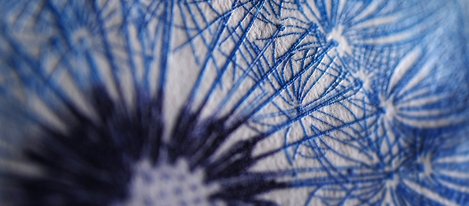

The Green Banknote Initiative
According to Giesecke+Devrient (G+D), the sustainability revolution has accelerated to embrace an ever-growing range of environmental and social issues. With its ‘Green Banknote Initiative’, the company is taking this to the next level by proving that the interplay of durability and security generates more than just sustainability, namely an efficient, future-proof cash-cycle, far beyond greenwashing.
G+D and its papermaking and feature subsidiary Louisenthal have been working on reducing the environmental impact of their banknote production and cash-cycle-related activities for many years. They have already surpassed their climate goal of a 25% reduction in CO2 emissions by 2022 (base year 2016), having achieved a reduction of 32% in 2020.
G+D now aims to point the way to a future banknote that is as secure as it is sustainable, demonstrating that there are ways to achieve durability in a sustainable way that is compatible with proven cotton-based security.
‘Paving the way for greener payments means recognising that the sustainable banknote of the future relies on natural fibres – that’s why durable cotton notes are a plus for the whole cash cycle’, says Clemens Berger, CEO of Louisenthal.
A holistic view

However, he continues, durability alone does not make a valuable, sustainable banknote. An unbalanced interplay between security and sustainability means not only a shorter lifetime in the cash cycle but also a loss of money, confidence, efficiency, and sustainability. To be truly sustainable, banknotes must have several properties in addition to durability.
The Green Banknote Initiative defines this as ‘Durability+’, a concept that covers the whole range from product to production to nd-of-life, considering the different fields of action across the entire banknote lifecycle. This starts with the best security solutions for banknotes in a combination of embedded, printed, and applied features; and ends with a variety of options for utilising the fibre-based matrix of cotton banknotes.
Partnering and collaborating with customers on sustainability is crucial. For G+D this means, for example, consulting on environmental strategy or collaborating on specific production and product solutions, from the protection of natural resources and substrate optimisation to discussing end-of-life solutions.
Future is based on natural fibres
‘To see the influence of our footprint but also to find out which levers we have, we at G+D have assigned an external institute to conduct a product carbon footprint as well as a water footprint of our standard cotton, Longlife™ varnish, and Hybrid™ substrate’, said Alexandra Geiger, Sustainability Engineer at G+D’s Banknote Solutions Division.
The key findings? ‘Highly durable cotton-based banknotes have the smallest CO2 footprint among available banknotes’, she states. ‘Hybrid™ notes, as the leading product in terms of sustainability today, generate up to 22% less CO2 during their lifetime and up to 38% less CO2 during production than plastic banknotes’.
At the same time, their durability is comparable to that of banknotes made of plastic. More than that, replacing conventional cotton with alternative fibres such as organic cotton not just significantly reduces the carbon footprint, ‘it is also the biggest lever for reducing the water consumption of banknotes,’ she adds.
The Green Banknote Initiative will be formally presented at the Intergraf Currency+Identity in April as well as at the Global Currency Forum 2022 in May.

Weitere Informationen
The Green Banknote Initiative
Als ein führendes Unternehmen der Branche nehmen wir das Thema Nachhaltigkeit ernst. Auf der Grundlage einer Studie, die Banknotensubstrate unter die Lupe genommen hat, haben wir unseren Fokus auf das Thema nachhaltige Banknoten ausgeweitet.